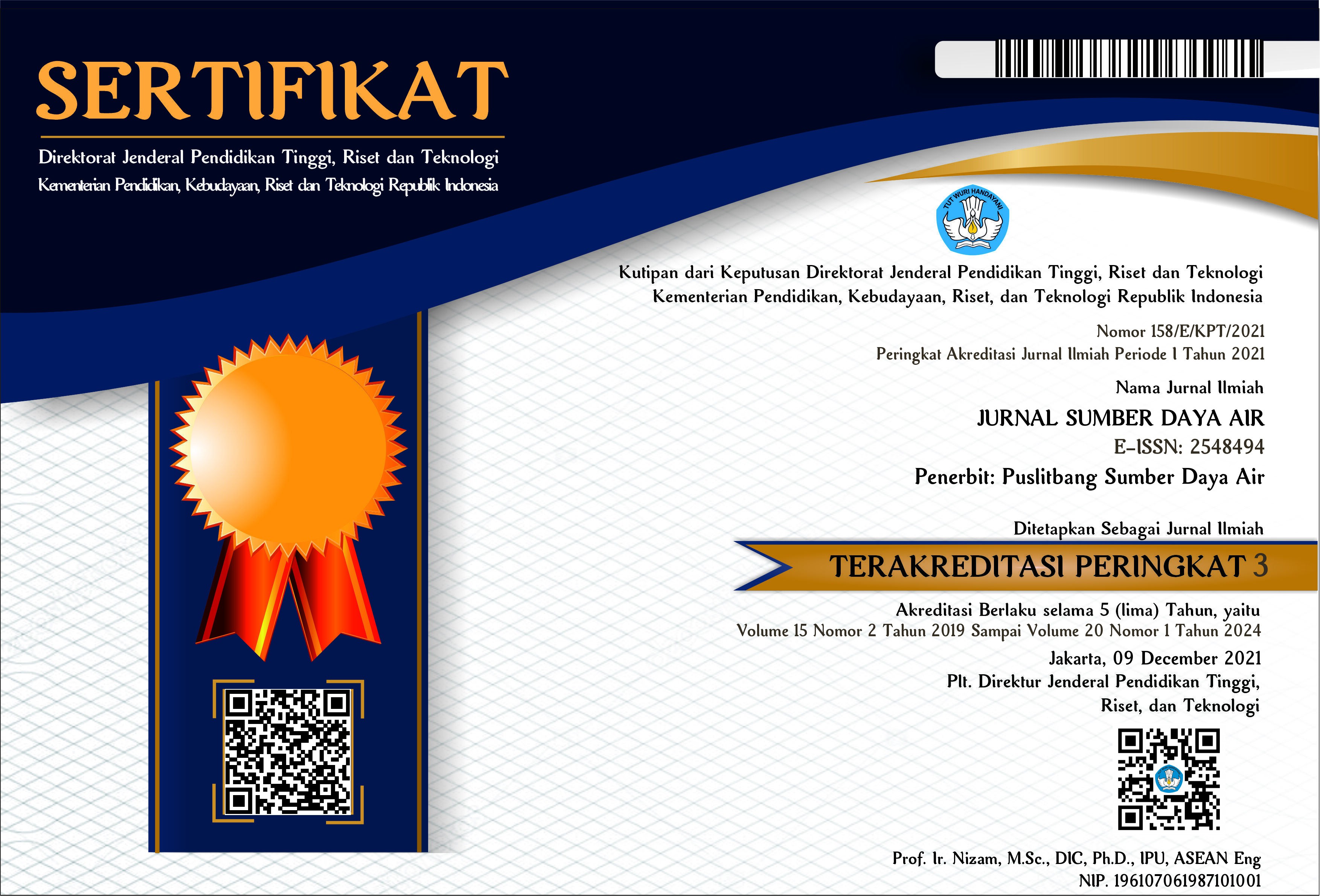PERENCANAAN SABO UNTUK MENGENDALIKAN LAJU SEDIMENTASI DI RAWAPENING
DOI:
https://doi.org/10.32679/jsda.v17i1.610Abstrak
Rawapening has an area of 2,667 acres, which now ceases to exist. This natural reservoir serves to preserve water, control flood, generate electric turbine, and raw water resource. The depth of this lake decreases 42 cm annually, with the shallowing could cause flooding of the lakeside and and reducing the water supply. This study finds the additional amount of structure and dimension of sabo dam to prevent hazards at each river: at Panjang 2 (B=20m H=2m, and B=25m H=2,5 m), at Galeh 2 (each of B=8m H=2,4m), at Legi 2 (B=10m H=2m, and B=25m and H=2,5m), at Parat 1 (B=13m H=2,7m), at upstream Sraten 1 (B=15m H=2,7m), at downstream Sraten 1 (B=15m H=2,7m), and at Kedungringgis 1 (B=12m H=1,8m). Existing materials are fine and rough sand. Using WaTEM/SEDEM, saboplan guideline by processing the designed capacity, it is estimated that each river’s potential annual yield (in tonnes): Panjang 86.221,8, Galeh/Torong 45.138,24, Legi 42.404,04, Parat 28.579,32, Sraten 25.988,76, and Kedung Ringis 6.955,2. Overall, sabo dam is designed to be a closed type dam located in inlet rivers of Rawapening. Sabo dam construction holds 25% of potential sediment. Collectively, it adds a control volume of 2.885 m3, from 11.539 m3 to become approximately to become 14.424 m3. To cope with sedimentation in Rawapening, the structural approachment (sabodam) should be combined with non structural approachment such as restoring land use in the upstream area for more optimal sedimentation control.
Keywords: Sedimentation, rawapening, erosion, WaTEM/SEDEM
Unduhan
Diterbitkan
Cara Mengutip
Terbitan
Bagian
Lisensi
The Authors submitting a manuscript do so on the understanding that if accepted for publication, copyright of the article shall be assigned to Jurnal Sumber Daya Air and Pusat Penelitian dan Pengembangan Sumber Daya Air as publisher of the journal.Copyright encompasses exclusive rights to reproduce and deliver the article in all form and media, including reprints, photographs, microfilms and any other similar reproductions, as well as translations. The reproduction of any part of this journal, its storage in databases and its transmission by any form or media, such as electronic, electrostatic and mechanical copies, photocopies, recordings, magnetic media, etc. , will be allowed only with a written permission from Jurnal Sumber Daya Air and Pusat Penelitian dan Pengembangan Sumber Daya Air.
Jurnal Sumber Daya Air and Pusat Penelitian dan Pengembangan Sumber Daya Air, the Editors and the Advisory International Editorial Board make every effort to ensure that no wrong or misleading data, opinions or statements be published in the journal.




















